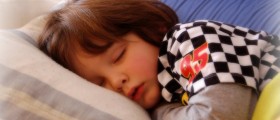
Dyslexia is a condition caused by the disability of thebrain to process graphic symbols, and sometimes numbers. Children with dyslexiaare nowhere slow, they are averaged or even bright, and they may betremendously talented in different areas of art, such as drawing, as well asphysical coordination. However, if they have difficulty coping with readingand, judging by their progress, they seam to be about two grades behindeveryone else, that may be a clear indicator that they are suffering fromdyslexia.
The most common cause of dyslexia is genetic. Some othercauses may be early ear infections. On the other hand, it has nothing to dowith the gender, as the number of male and female children with symptoms ofdyslexia is pretty much equal. They all have increasing difficulty distinguishingsimilar sounding words.
The first thing that draws the attention to a potentiallydyslexic child is his inability to correctly spell even the most basic andsimple words. Also, they might spell some words in a very rational, butinaccurate way, like "please/pleeze". Another problem dyslexic childrenexperience is with so-called jumbled spellings. These attempts includes all theright letters, but their order is mixed up. This shows that the child hastrouble with visual memory because, unlike non-dyslexic people who determinewhich word visually “looks right” when they are unable to remember thespelling. In addition to that, visual similarity of some letters is a source ofconfusion, as they are not capable of telling apart letters like “b” and “p”.
Another thing that poses a problem for dyslexic children isfollowing directions. They are not likely to differentiate left from rightwithout getting confused. Therefore, the easiest way to determine whether achild is dyslexic is to ask him to point to his right foot with his left handor the other way around.
As their memory is quite limited, dyslexic children are notgood at following instructions involving multiple steps, or organizing themselves.Being that it’s considerably difficult for them to remember a chain of tasks tobe done, things like color coordinated papers and folders, or instructions simplified to one action, might really make things easier for them.
Of course, every child is different and the above mentionedsymptoms are the most common ones, which means that not every dyslexic childwill experience all of them.

















Your thoughts on this
Loading...